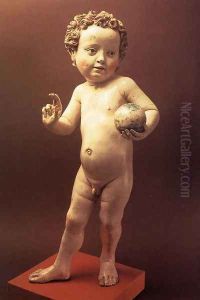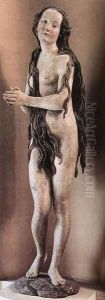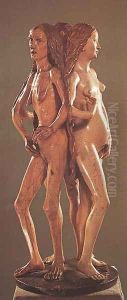Gregor Erhart Paintings
Gregor Erhart was a notable German sculptor of the Renaissance, born around 1470 in Ulm, a city in what is now the state of Baden-Württemberg, Germany. He was a member of the Erhart family of sculptors, which included his father Michel Erhart, who was a prominent figure in the Ulm School of sculpture. Gregor's works are characterized by their expressive detail, elegance, and the fusion of Gothic tradition with emerging Renaissance ideas.
Educated and trained by his father, Gregor Erhart took up the family trade and developed his distinctive style. While his early work shows a strong Gothic influence, he gradually incorporated more naturalistic elements and human proportions typical of the Renaissance. He is perhaps best known for his religious sculptures, including altarpieces, statues, and reliefs. These works often showcased his skill in carving wood and his ability to imbue his figures with a sense of piety and emotion.
One of Gregor Erhart's most famous works is the Lamentation of Christ, also known as the 'Ulm Pietà,' which reveals his mastery of human expression and form. It is also notable for its detailed portrayal of sorrow and suffering, characteristics that are prevalent in many of his religious-themed pieces.
Erhart's contributions to the arts were recognized during his lifetime, and he became a sought-after artist for church commissions. His influence can be seen in the works of other artists in the region and period. Although he is less known today compared to other Renaissance artists, his work still stands as an important bridge between the late Gothic and early Renaissance styles in Southern Germany.
Gregor Erhart continued to work in Ulm until his death in 1540. His legacy is preserved in numerous ecclesiastical buildings throughout the region, where his sculptures remain objects of admiration and study for their artistic and historical significance. Through his blending of Gothic and Renaissance elements, Erhart contributed to the transition of German sculpture into the new aesthetic of the 16th century.


